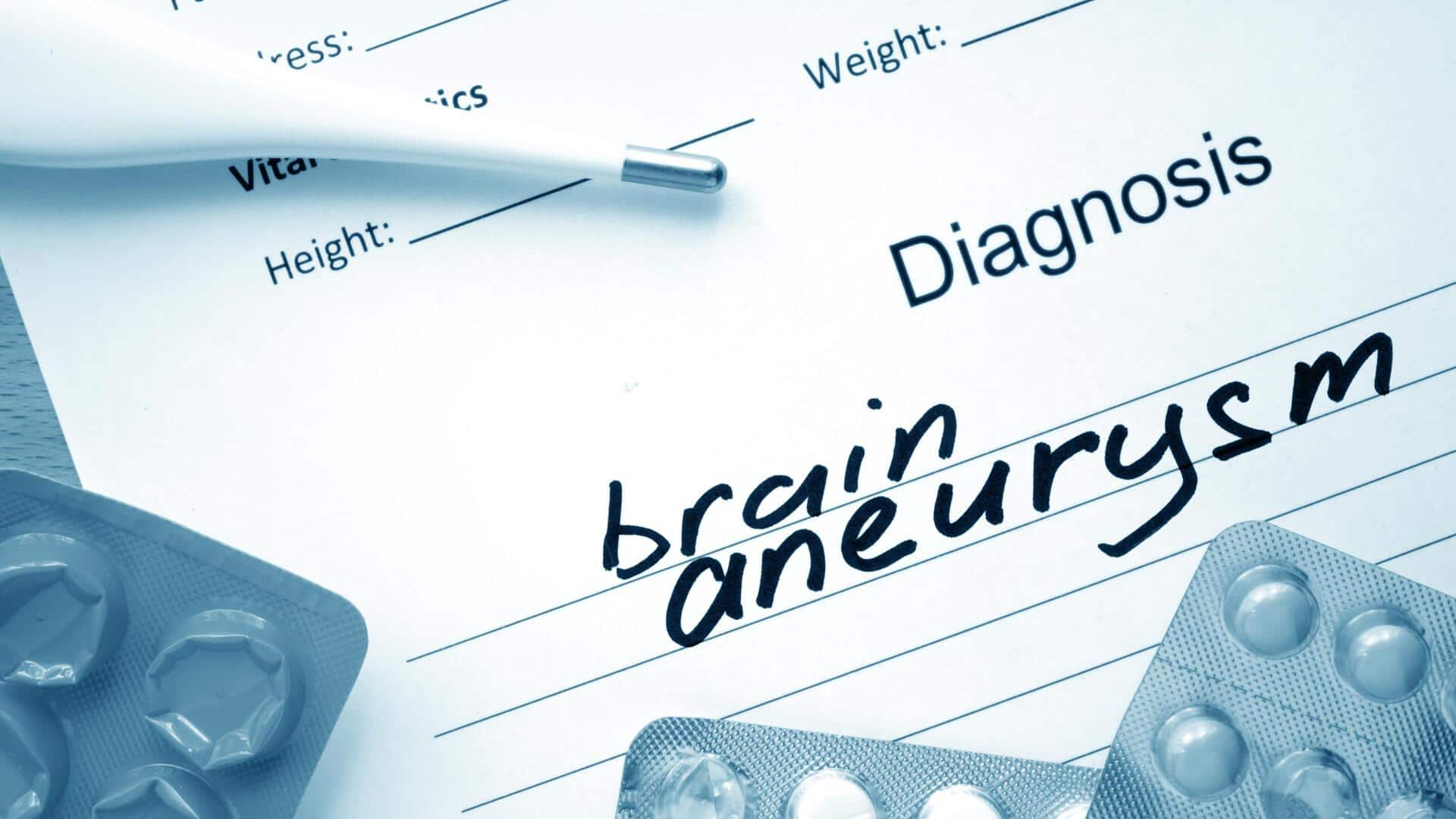
Brain aneurysm: Symptoms, causes, and treatment
What's the story
In the domain of human health and wellness, some specific troubles stay hidden until they jump out at us unexpectedly. A brain aneurysm is a prime example of such a surprise attack.
What's really scary is that brain aneurysms can happen suddenly, with no warning signs at all.
However, being aware of the causes and treatment options can help in prevention and timely treatment.
Brain aneurysm
What is a brain aneurysm?
A brain aneurysm is a weak spot in a blood vessel's wall inside the brain. Sometimes, it can burst and lead to a subarachnoid hemorrhage (SAH).
Imagine a weak point in a balloon that becomes thin and stretched. A brain aneurysm is similar to that.
This part of the blood vessel gets tired from the constant blood flow and bulges out, like a bubble.
Types
Types of brain aneurysms
Brain aneurysms come in various types. The most common are saccular aneurysms, which bulge out like a dome and have a narrow connection to the artery.
Fusiform aneurysms, less common, create widened areas in blood vessels.
While many aneurysms go unnoticed, some can grow large, leak, or burst, causing serious bleeding in the brain.
Symptoms vary based on whether the aneurysm ruptures or not.
Ruptured
Ruptured brain aneurysm symptoms
When a brain aneurysm ruptures, it can lead to serious symptoms that need urgent attention.
These include a sudden and intense headache, unconsciousness, nausea, vomiting, drowsiness, balance problems, and a stiff neck.
Other signs might be dilated pupils, sensitivity to light, a drooping eyelid, confusion, or seizures.
Although most aneurysms don't show symptoms, larger ones can press on the brain and nerves, causing problems.
Unruptured
Unruptured brain aneurysm symptoms
Headaches or pain above or behind your eye are the major signs of an unruptured brain aneurysm. Other signs include dilated pupils, a drooping eyelid, trouble speaking, and numbness on one side of your face.
Sometimes, a sudden headache can be a signal of a leaking aneurysm, known as a sentinel bleed.
This might be a warning that a full rupture could happen soon.
Causes
What causes brain aneurysms?
Brain aneurysms develop when the walls of brain arteries weaken and thin, often occurring at artery branches.
Some are present from birth due to artery wall abnormalities.
Conditions like Vascular Ehlers-Danlos syndrome, autosomal dominant polycystic kidney disease, Marfan syndrome, fibromuscular dysplasia, and arteriovenous malformation increase the risk.
Having a first-degree relative with a history of brain aneurysms also heightens susceptibility.
Rupture causes
What causes brain aneurysms to rupture?
A ruptured brain aneurysm is commonly triggered by high blood pressure, the leading factor.
Strain caused by heavy lifting and intense emotions, like anger or distress, can also contribute to rupture.
Certain medications such as blood thinners (like warfarin) and prescription drugs like ephedrine and amphetamines, along with illicit substances such as cocaine, increase the risk of aneurysm bleeding.
Treatment
Treatment options
For a ruptured aneurysm, your doctor might do surgical clipping, which involves opening a part of your skull to access the aneurysm, placing a metal clip to stop blood flow, and sealing the skull.
Other surgery options that don't require opening of the skull are endovascular coiling and flow diverter surgery.
Small aneurysms that haven't ruptured and aren't causing symptoms may not need treatment.